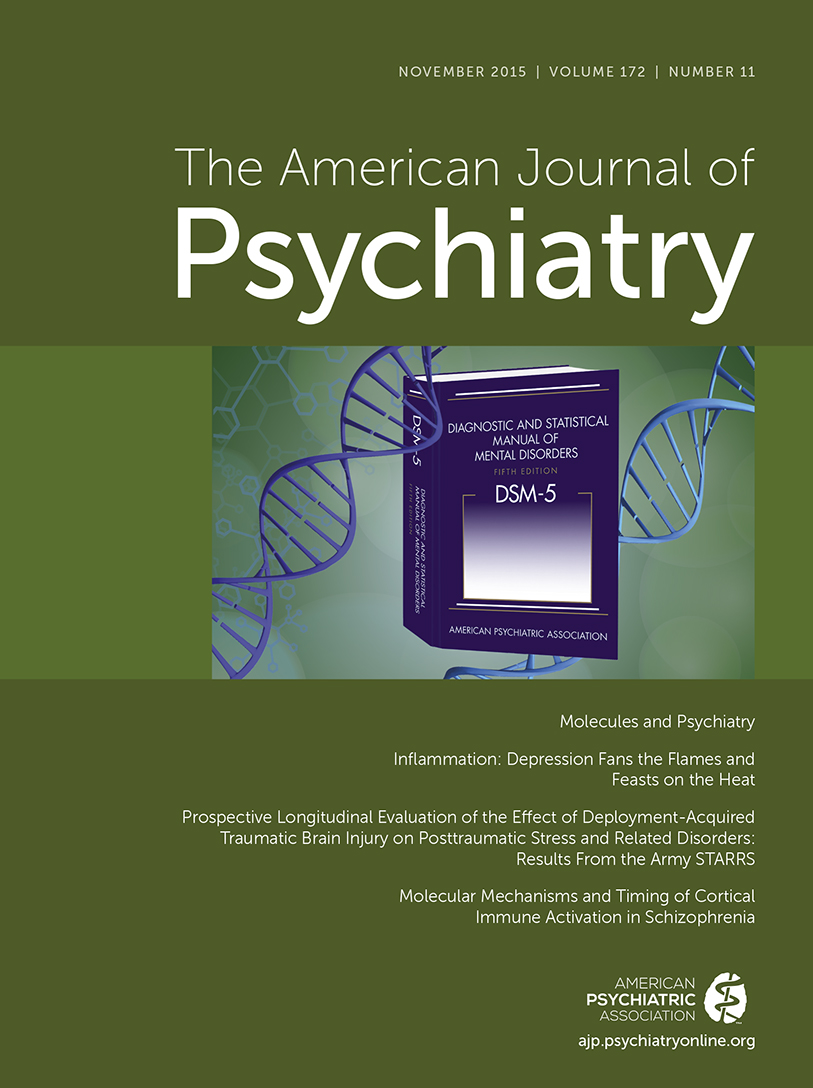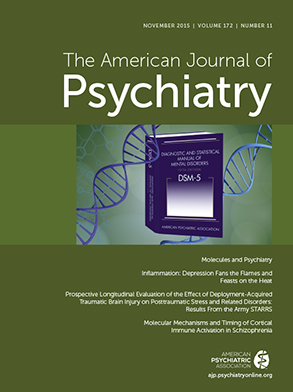Mania and depression were first described over two millennia ago, making bipolar disorder one of the oldest mental disorders. Lithium is the oldest psychotropic drug and is still positioned as one of the first-choice drugs for bipolar disorder (
1). Although other mood stabilizers and antipsychotics are also used for the treatment of bipolar disorder, most of them were originally developed for other diseases such as epilepsy and schizophrenia. Specific efficacy of lithium ions, as well as high heritability of bipolar disorder, suggests that molecular dysfunction plays a role in this disorder. To comprehensively search for the molecular basis of bipolar disorder, genetics and gene expression analyses of postmortem brains should be major strategies.
At the end of the last millennium, the development of DNA microarray and completion of the human genome project enabled comprehensive analysis of all gene transcripts in the brain. Researchers expected that the molecular basis of bipolar disorder would be clearly elucidated using this technology, and a number of studies mainly focusing on the prefrontal cortex were conducted. However, the initial enthusiasm was discouraged by the lack of reproducibility among multiple studies (
2). The difficulty in replicating gene expression findings may have arisen from multiple factors, including technological limitations, small sample numbers, medication effects, and postmortem and antemortem changes. Our lack of knowledge about the brain region responsible for bipolar disorder is also an issue that should be considered.
Development of next-generation sequencing technologies enabled more comprehensive analysis of DNA sequences and gene expression. Whole-genome or exome analysis of bipolar disorder using next-generation sequencing (
3), as well as transcriptome analysis by next-generation sequencing, now referred to as RNA sequencing (
4), has recently been applied to research on bipolar disorder. Using RNA sequencing analysis, all transcripts, including various alternative splicing isoforms and previously unidentified transcripts, can be analyzed, allowing for a dynamic range larger than that of DNA microarray analysis.
However, comprehensive analysis of RNA is hampered by the existence of abundant rRNA, which catalyzes protein synthesis, but its sequence is not related to amino acid residue sequences of translated proteins. It is now possible to eliminate rRNA from RNA samples using a recently developed experimental technique.
In this issue of the
Journal, Cruceanu et al. (
5) first applied RNA sequencing with rRNA deprivation in order to search for molecules altered in the brains of patients with bipolar disorder. They analyzed the anterior cingulate cortex, which plays a role in regulating emotion and is the most established candidate brain region of bipolar disorder (
6).
They identified that 10 candidate genes were differentially expressed in the anterior cingulate cortex of 13 patients with bipolar disorder relative to 13 comparison subjects, and all of them were downregulated. These findings were verified in the published data using an independent sample set. Interestingly, the list contained three genes encoding G protein-coupled receptors, including
CHRM2 encoding a muscarinic-type acetylcholine receptor and
SSTR2 encoding a somatostatin receptor. G protein-coupled receptors include neurotransmitter and hormone receptors and are major targets of currently available psychotropic drugs. Using bioinformatics analysis, Cruceanu et al. found that G protein-coupled receptor genes were statistically enriched among all differentially expressed genes associated with bipolar disorder. These results are consistent with a previous report using DNA microarrays (
7).
To rule out the possibility of medication effects, Cruceanu et al. studied the effect of mood-stabilizing drugs on gene expression in neural progenitor cells derived from human-induced pluripotent stem cells. Some of the top 10 genes differentially expressed in bipolar disorder were downregulated by mood stabilizers, suggesting that the original finding might be affected by medication. However, one of the 10 downregulated genes, DIRAS2, was upregulated by all three mood stabilizers, suggesting that the downregulation of this gene in the postmortem brain might be related to the pathophysiology of bipolar disorder. Additionally, isoform-level analysis successfully identified that a change in a specific alternatively spliced CHRM isoform resulted in the observed alteration in CHRM.
RNA sequencing can measure noncoding RNA (ncRNA), in addition to mRNA that encode proteins. It was previously believed that only 1%−2% of the genome was protein-encoding and functional, but it was ultimately discovered that nearly 70% of the genome is transcribed into RNA (
8). The function of ncRNA is not completely understood, and its differential expression in a disease will likely aid in the elucidation of its function. The authors found differential expression of several long intergenic noncoding RNAs (lincRNAs), a subgroup of ncRNA, with dry names: linc-KARS-3, linc-SFSWAP-3, and RP11–638F5.1.
This study has overcome some of the problems experienced in previous studies. First, new technology enabled comprehensive analysis of the transcriptome, including ncRNA, allowing an improved dynamic range. Second, the observed finding was replicated in an independent cohort. Third, the effect of medication was considered using an in vitro study of human neural progenitor cells.
The present findings, however, should be considered a starting point in the pursuit of the molecular basis of bipolar disorder. Function of DIRAS2 and those of the identified lincRNAs remain mostly unknown, and further research to elucidate the function of these molecules will be indispensable toward understanding the significance of the present findings. Furthermore, it remains unclear as to whether the anterior cingulate cortex is the brain region responsible for bipolar disorder, given that anterior cingulate cortex alteration is not specific to this disease.
Genetic or gene expression studies undertaken prior to 2000 focused on candidate genes mainly identified through psychopharmacological studies of psychotropic drugs. However, such studies did not result in robust findings. Recent technologies allow identification of unexpected molecules with unknown functions. Previously, clinical studies involved the application of findings from basic research. However, recent innovations have altered the situation and now allow clinical studies to add a new dimension to basic research. The findings from this study will open new doors for the study of bipolar disorder and related basic research.

